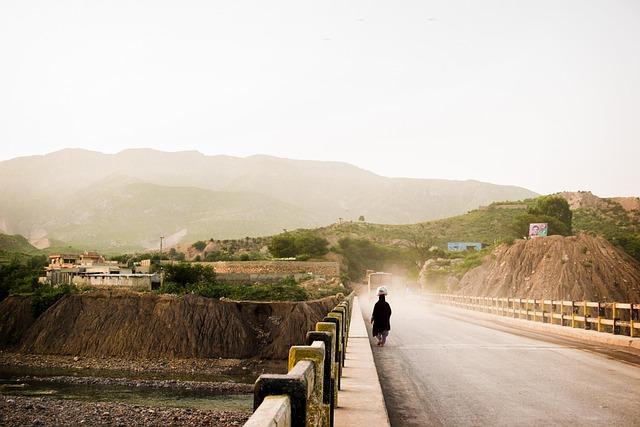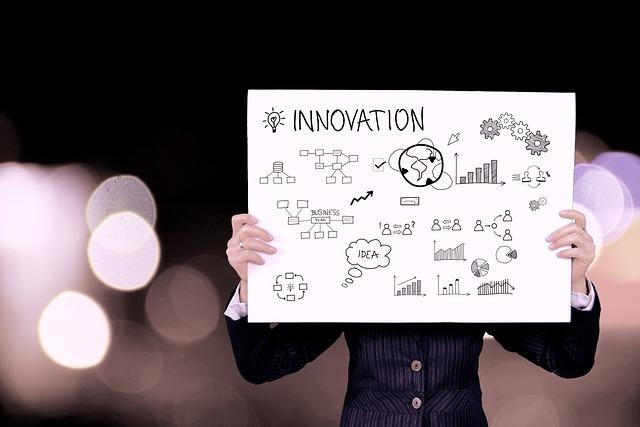Driving Progress: Pakistan’s Journey in Tech and Innovation
In an era where technology is the lifeblood of modern economies, Pakistan stands at the crossroads of potential and opportunity. With a burgeoning youth population, a vibrant startup ecosystem, and an increasing emphasis on digital transformation, the nation is weaving a narrative of resilience and innovation. This article explores Pakistan’s journey through the dynamic landscape of technology and innovation, highlighting the milestones achieved and the challenges ahead. As the country embraces the digital age, it reveals not only a commitment to progress but also a vision that promises to reshape its economic future and redefine its global standing. Join us as we delve into the stories of pioneers, disruptors, and visionaries driving change in Pakistan’s tech sector, illuminating the path toward a brighter, more innovative tomorrow.
Exploring the Foundation of Pakistans Tech Landscape
Pakistan’s tech ecosystem is rapidly evolving, fueled by a blend of entrepreneurial zeal and a youthful, tech-savvy population. As the nation embraces digital transformation, several key factors are driving this evolution:
- Innovative Startups: A surge in homegrown startups has fostered creativity and technological advancement across diverse sectors.
- Government Initiatives: Policies aimed at promoting IT exports and facilitating tech education are laying a solid groundwork for growth.
- Investment Opportunities: Increased venture capital interest is helping startups scale and expand their reach beyond national borders.
Moreover, Pakistan’s strategic location provides a gateway to emerging markets in Asia, making it an attractive destination for tech companies. The burgeoning freelance community is another promising aspect, contributing to the global digital economy. Key attributes include:
- Skilled Workforce: With numerous universities offering technology-related degrees, the workforce is not only skilled but also adaptable to the changing demands of the industry.
- Growing Digital Infrastructure: Improvements in internet connectivity and mobile technology have enhanced accessibility and usability for both businesses and consumers.
- Collaborative Ecosystems: Accelerators and incubators are nurturing upcoming tech talents and ideas, fostering a culture of innovation.

Fostering a Culture of Innovation in Education
To cultivate innovation in education, it’s essential to nurture an environment where creativity and critical thinking flourish. Schools and universities should focus on the following key elements:
- Collaboration: Encouraging partnerships between educators, students, and tech companies can lead to groundbreaking projects that revolutionize learning.
- Flexible Learning Spaces: Designing classrooms that adapt to various teaching styles and learning activities promotes engagement and exploration.
- Interdisciplinary Approaches: Fusing different subjects and skillsets enables students to think outside the box and look for innovative solutions to complex problems.
Additionally, leveraging technology is crucial for fostering creativity and enhancing educational outcomes. Implementing tools like virtual reality and artificial intelligence can transform traditional methods. Schools can explore:
| Technology | Benefit |
|---|---|
| Virtual Reality | Immersive Learning Experiences |
| Artificial Intelligence | Personalized Learning Pathways |
| Online Collaboration Tools | Enhanced Group Work and Problem Solving |

Navigating Challenges: Infrastructure and Investment
The landscape of technology and innovation in Pakistan is one that grapples with various challenges, particularly in the realms of infrastructure and investment. Despite the burgeoning potential for growth, systemic hurdles such as inadequate connectivity, limited access to financing, and outdated technological frameworks hinder progress. The government and private sector must collaborate to develop robust frameworks that address these deficiencies and pave the way for enhanced digital literacy and accessibility. Key areas to focus on include:
- Enhancing internet connectivity: Expanding broadband access to rural and underserved urban areas.
- Upgrading existing infrastructure: Modernizing power supply and transportation networks to support tech-driven projects.
- Stimulating investment opportunities: Creating incentives for both local and foreign investors to engage in Pakistan’s tech sector.
Investment in both human capital and infrastructure will be a game-changer for the tech ecosystem in Pakistan. Creating incubators and innovation hubs can foster a culture of entrepreneurship and creativity, propelling local startups into the global market. Leveraging public-private partnerships can mobilize financial resources and expertise, as evident in successful case studies across various sectors. The following table highlights some key statistics that underline the importance of investment in infrastructure:
| Infrastructure Focus Area | Current Investment (USD) | Projected Growth (2025) |
|---|---|---|
| Telecommunications | 1.5 billion | 2.5 billion |
| Energy Sector | 2 billion | 3.5 billion |
| Transport and Logistics | 800 million | 1.2 billion |

Harnessing Talent: Strategies for Global Competitiveness
In the quest for global competitiveness, nations increasingly recognize that harnessing local talent is critical to driving innovation and technological progress. Pakistan has strategically invested in cultivating a vibrant tech ecosystem, bridging the gap between education and industry. Universities and training institutes have begun to emphasize critical skills such as coding, data analysis, and entrepreneurship. By fostering partnerships with local and international businesses, educational institutions are equipping students with real-world experience and exposure to cutting-edge technologies, effectively transforming them into job-ready professionals.
Moreover, to amplify its global standing, Pakistan has implemented several initiatives that encourage startups and tech innovation. By creating innovation hubs and providing access to funding through public and private sectors, young entrepreneurs are empowered to turn innovative ideas into tangible solutions. The government has also launched tech parks and incubators, which serve as incubators for budding talents, offering mentorship and resources. Additionally, various tech festivals and hackathons are organized to showcase local talent, encouraging collaboration and knowledge-sharing among peers. These efforts reflect a comprehensive approach to nurturing Pakistan’s human capital and enhance its competitiveness on the global stage.
To Wrap It Up
As we draw the curtain on this exploration of Pakistan’s remarkable journey in technology and innovation, it’s clear that the path ahead is both illuminated and fraught with challenges. From its resolute entrepreneurs to its burgeoning tech hubs, the nation is not just catching up with global trends but is beginning to carve out its own niche on the world stage. The spirit of innovation, rooted in a rich history, is set to propel Pakistan toward a future brimming with possibilities.
However, as we celebrate the strides made, it’s crucial to recognize the work that remains. Building an inclusive ecosystem that nurtures creativity and fosters sustainable development will be pivotal in ensuring that progress resonates across all layers of society. As Pakistan embraces this era of digital transformation, the fusion of tradition and modernity will be its secret weapon—a bridge linking its past to a promising future.
In the grand tapestry of global technology, Pakistan is weaving its threads, vibrant and strong. The journey is long, but with resilience and collaboration, the nation stands on the cusp of a new dawn. Let us keep our eyes on the road ahead, as we collectively drive progress forward, for the innovations of today will be the stepping stones for generations to come.



